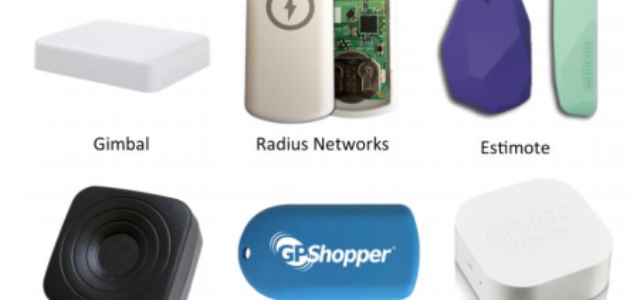How This Strategy Empowers Service Firm Growth
Service firms acquired clients, in the past, primarily through referrals. When a service provider did a really good job, their satisfied clients would recommend them to other people. But this wasn’t the only strategy that used to, and still does, work.

Some service leaders were featured columnists in publications that aggregated their ideal clients. They also attended conferences and tradeshows. They became public speakers. They networked at industry events and when all else failed, they cold-called prospects. At the very beginning of the digital revolution, email marketing also became fashionable and had some success.
These tried and true techniques have worked in the past. Do they still work? Yes. But are they the only strategies you should be considering these days? Absolutely not.
A new set of strategies has emerged, designed to help you connect with great new prospects. Loosely collected under the moniker of digital marketing, their effectiveness is no longer in question. If you are wondering what all the fuss is about for this thing called digital marketing, I’d like to offer you some insights here to help you think about how digital can be a driver of new clients for your company.
_____________________________________________________
Key Take-Away
Digital marketing is just like analog marketing, but conducted online.
_____________________________________________________
How is digital marketing like analog marketing?
Digital marketing is just like traditional analog marketing, like many of the strategies I just outlined. But digital marketing is conducted online. I’ll give you a specific example from the analog world and then show you how the same processes apply to the digital world.
Let’s assume, for just a moment, that a professional service leader is invited to a conference to be a speaker. For the service leader to have a desirable outcome, they would need to go through quite a mental process. Let me outline here what it might look like. Maybe you’ve even gone through this process before.
One of the first questions the speaker would ask is – who’s the audience? The second question would be – is that the audience we want to serve? Could the people in the crowd someday become our client? If the answer is yes, then the speaking engagement is on.
Next they would likely ask themselves, why are people coming to this event? When you’re invited to speak at a conference, often people are coming to the event for a multitude of reasons. It’s important to be sensitive to the motives of people attending the conference.
You see, it wouldn’t be enough for the speaker to stand up there and make a pitch about their company, why they’re great and why people in the audience should choose to work with them. People would be bored and possibly disappointed by this approach. They may even hold the speaker in low regard if they simply made a pitch.
After all, people come to these events to learn some things, to grow in their capabilities and to be better professionals. So the speaker needs to do a few things. They need to give their audience some insights, foster some connections, make a favorable impression and demonstrate their expertise. This is how the speaker becomes a trusted advisor.
The speaker would need to know how long their speech should be for this audience. If they give too much information, the audience might get bored and leave. If they give too little information, the audience might feel cheated, like they didn’t get their money’s worth.
The speaker would also want to know some basic logistics, particularly around technology. Will I use my laptop and PowerPoint or should I use Keynote? Will there be a hand-held microphone or a lapel microphone? Will I be able to see the presentation as my audience sees it?
The speaker would need to pick a topic that would be of interest to their audience, while at the same time positioning them in the most favorable light possible. This means the speaker would really have to think about the goals of the audience.
For the speech to be well received and for the speaker to attain trusted advisor status, the topic would need to be relevant. The speech would need to give the audience some things to think about that might be new and fresh for them.
When the speech is over, the speaker would need to be friendly and open to people who might want to talk in greater detail. The speaker would need to be ready to engage those audience members who want to go deeper.
Of course, as those people are talking, the speaker is listening for telltale signs of readiness to be a client. The speaker is going to ask questions about where the person standing in front of them works, about their responsibilities and about whether or not they are interested in possibly working with the speaker’s company.
This is the standard mental process that a really smart professional service leader will go through to ensure a successful outcome from their speech. If they do everything well, they’ll likely persuade a few people in the audience to consider them as their service provider. If they are diligent in their follow-up processes, they’ll convert that interest into new deals and revenue.
But the question becomes, can you apply this process to the digital world? Can you pull similar types of levers to achieve similar types of outcomes? My answer? You better believe it.
The example I’ve just outlined is, believe it or not, completely replicable in the digital sphere, but with one major difference. The speaker can be building these connections, can become the trusted advisor to great new prospects, 24 hours a day and 7 days a week. Through the power of technology. This is Moore’s law at work on your behalf.
How digital marketing works
Let’s quickly break down the primary steps I outlined above:
- Who is this audience?
- Why is the audience coming to this event?
- What goals matter to the audience?
- What technology do I need?
- What topic should I pick?
- How do I demonstrate some fresh insights?
- How do I know who is a great prospect and ready to engage?
- How do I handle follow-up with those who express an interest?
For digital marketing to be successful, these exact same questions need to be answered. I’ll give you an example from LinkedIn. Let’s assume for a moment that you’re going to write a new blog-post on LinkedIn’s Pulse network. Let’s assume that you’re hoping your blog will be featured in a channel on LinkedIn that aggregates your ideal client.
Now you’ll have to ask the same questions I’ve listed above, except you’ll focus on the channel where your blog-post will appear. So questions you’ll ask yourself might include:
- Who reads content in this channel?
- Why do they spend time in this channel?
- What goals are commonly discussed in this channel?
- What topic should I pick?
- How do I demonstrate some fresh insights?
- How do I know who is a great prospect based on those who read and possibly liked my post?
- How do I handle follow-up with those who seemed to like the content I wrote?
As you can see, nearly all of the same types of questions apply to the digital marketing process as apply to the analog marketing process. The difference is that instead of making a public speech, you’d be publishing a blog-post. It’s that simple.
What is the digital ecosystem?
I don’t want to oversimplify digital marketing because publishing a blog-post is merely a beginning to what digital can do to help you acquire new clients. Blogs are a point solution. There is so much more to digital.
There are so many ways to make connections with great new prospects out there today. In fact, I have come to think of digital as an ecosystem that is full of possibilities. What sort of strategies and tactics might you consider to attract prospects in the digital ecosystem?
- Blog-sites that aggregate your ideal client
- Email marketing
- PayPerClick
- SEO and long tail searches
- Industry trade publications that have an online component and accept submissions from third-party authors
- Industry associations that allow insiders and even outsiders to contribute content
Your goal with all of these networks is to stimulate them with great ideas and leave them wanting more. Then give them a link to your website where they can feast on your great ideas.
How should you manage your digital ecosystem?
For your digital strategy to be really effective, you have to manage your website very well. Online brochure websites that primarily talk about the service provider, why they’re great and why prospects should choose them, do not get much traffic. There is little reason for people to spend time on those sites.
Instead, your website should become the best birthday present that your prospective ideal clients have yet to unwrap. How do you build this kind of website? You need great content that speaks to the goals, opportunities and challenges of ideal clients. The content should be a combination of stories and how-to ideas.
Think of it this way. A great new prospect, who is invisible to you today, encounters your insightful blog-post on some other website. They’re impressed with what they read and click on the link that promises them even more great ideas.
In one click, they are standing at the doorway of a gated asset (behind a registration form) on your website. If the content you offer seems like it will help them achieve their goals, they’ll fill out the form.
Then they’ll spend time with your content and consider your ideas and how you can help them. This is how the digital ecosystem pulls people from the hinter-lands of the blogosphere straight into a relationship with your firm.
How to build a powerful digital strategy
If you’d like to learn more about how to build a truly effective digital marketing strategy, I recommend an E-Book I’ve written called Ten Things Service Websites Must Do To Drive Revenue.
This free E-Book also includes an audio E-Book delivered chapter-by-chapter for busy people on the go who prefer to listen to ideas while on a plane, while working out or simply relaxing.
If you want to ramp up your digital marketing and avoid the mistakes and distractions that plague so many service firms today, I know this E-Book will really help you.
About the author
Randy Shattuck is a senior marketing executive, marketing automation guru and founder of The Shattuck Group, a full-service marketing firm that specializes in growing professional services firms.
Article by channel:
Everything you need to know about Digital Transformation
The best articles, news and events direct to your inbox
Read more articles tagged: Featured






